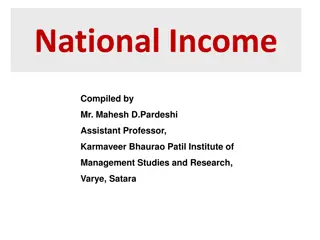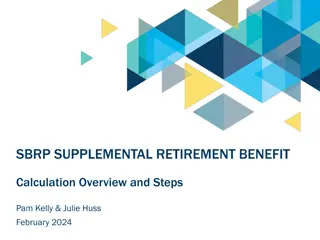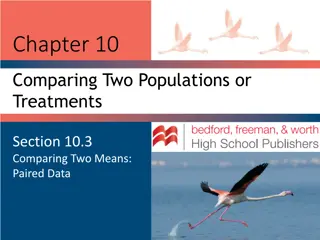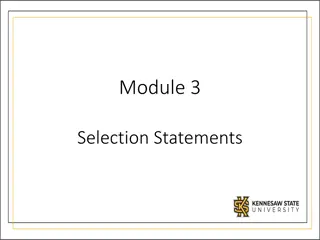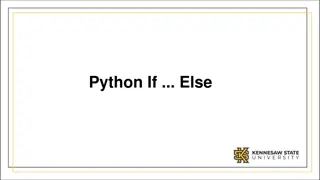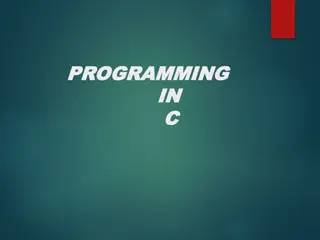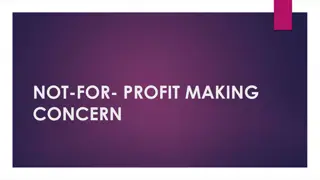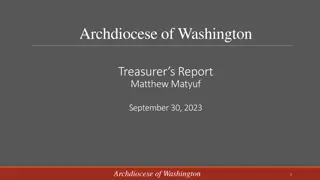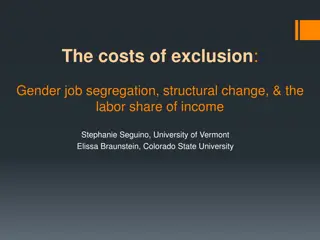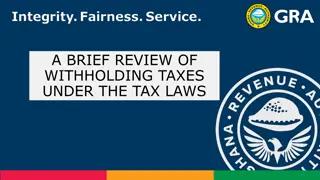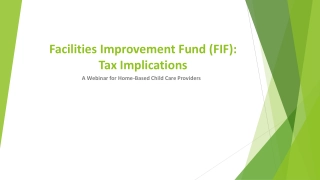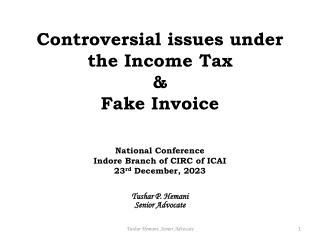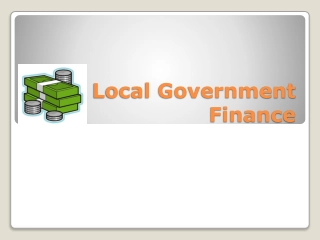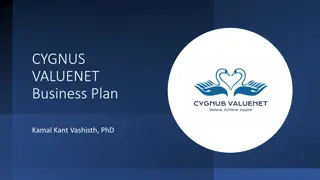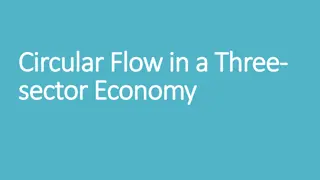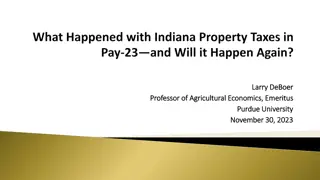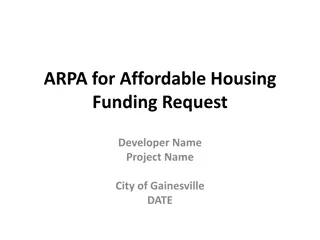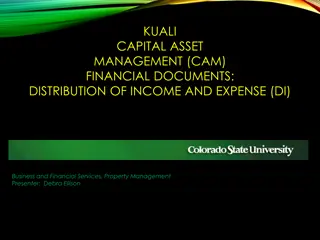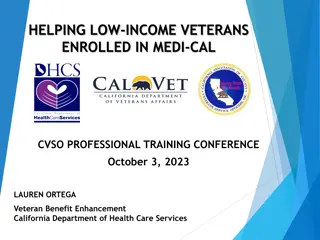Guide to preparing Income Statements
Learn income statement purpose, layout, calculations, and profitability ratios for business analysis.
Download Presentation
Please find below an Image/Link to download the presentation.
The content on the website is provided AS IS for your information and personal use only. It may not be sold, licensed, or shared on other websites without obtaining consent from the author. Download presentation by click this link. If you encounter any issues during the download, it is possible that the publisher has removed the file from their server.
Presentation Transcript
A Level Accounting Guide to preparing Income Statements Please turn on the slide show Application Evaluation Knowledge Analysis
By the end of these tasks... You will be able to define and explain the purpose of an income statement You will know the layout of an income statement and what to include within the statement. OPTIC You will be able to make calculations to include in an income statement Challenge You will be able to calculate profitability ratios to analyse business performance Application Evaluation Knowledge Analysis
Introduction to Income Statements The main activity of a trading business is to buy goods at one price and sell the same goods at a higher price. The difference between the two prices represents a profit known as gross profit. The gross profit for each item is totalled to show one figure. At the end of the financial year, the business needs to produce an income statement, showing the trading of the business and showing the gross profit for the year. The main income the business makes is from sales of goods or services. This is called revenue, sales revenue, sales or turnover. Application Evaluation Knowledge Analysis
What do I need to know? As a student, you need to know the layout of the income statement The layout of the income statement is as follows: Application Evaluation Knowledge Analysis
See Slide 8 for formulae to calculate A B C D Income Statement for Wyvern Wholesalers For the Year Ended 31 December 20-1 Sales (Revenue) 250,000 Less Sales Returns 5,400 Net Revenue (A) 244,600 Opening Inventory (1 January 20-1) 12,350 Purchases 156,000 Carriage In - Less Purchase Returns 7,200 Net Purchases (B) 148,800 161,150 Less Closing Inventory (31 December 20-1 16,300 Cost of Sales (C) 144,850 Gross Profit (D) 99,750 Application Evaluation Knowledge Analysis
Key Terms Revenue money coming into the business from selling goods or services. Purchases This is the amount spent to buy goods or inventory that the business will sell on or trades with. Inventory these are the goods that the business has in stock or available to sell. Cost of Sales cost to the business of the goods or inventory which have been sold in the financial year. Carriage in the expense or cost to the business of having purchases or inventory delivered. Application Evaluation Knowledge Analysis
Slide 5 showed an example of an Income Statement. Certain calculations will need to be carried out. These are labelled A B C and D. To calculate A B C D see the next slide. Application Evaluation Knowledge Analysis
How to find the figures for A B C and D Cost of Sales (C) Gross Profit (D) Opening inventory + Purchases + Carriage in - Purchase Returns - Closing inventory = Cost of Sales Revenue - Sales Returns = Net Revenue - Cost of Sales = Gross Profit or Loss Net Revenue or Turnover (A) Net Purchases (B) Purchases + Carriage In - Purchase Returns = Net Purchases Revenue (Sales) - Sales Returns = Net Revenue Application Evaluation Knowledge Analysis
How to calculate Profit for the Year Businesses have many other costs or expenses they will have to pay. They need to pay rent , electricity, salaries and insurance, etc. We now need to include these costs or expenses on the income statement by subtracting them from the gross profit or total income (gross profit + other income) Application Evaluation Knowledge Analysis
See next slide for how to calculate total expenses and profit for the year Income Statement for Wyvern Wholesalers For the Year Ended 31 December 20-1 Gross Profit 99,750 Add discount Received (other income) 2,500 102,250 Less Expenses Discount allowed 3,700 Salaries 46,000 Electricity and Gas 3,000 Business Rent and Rates 2,000 Sundry Items 4,700 (E) 59,400 Profit for the Year (F) 42,850 Application Evaluation Knowledge Analysis
Calculations (E) (E) Total Expenses Total Expenses = 3,700 + 46,000 + 3,000 + 2,000 + 4,700 = 59,400 Application Evaluation Knowledge Analysis
Layout of Income Statement Name of owner or business INCOME STATEMENT FOR YEAR ENDED (date) Revenue Opening Inventory Purchases Less Closing Inventory Less: Cost of Sales Gross Profit Less Expenses: Office Rent Heating and Lighting Wages and Salaries Profit for the Year Application Evaluation Knowledge Analysis
Example The following 3 slides will show you how to create an income statement. The question is on slide 14. Follow the steps given on slide 15 Application Evaluation Knowledge Analysis
The following information has been extracted from the business accounts of Matthew Lloyd from his first year of trading which ended on 31st December 2022. (** there is no opening inventory! **) Purchases 94 350 Revenue (Sales) 125 890 Question Inventory at 31stDecember 2018 5 950 (Closing Inventory) Office Rent 4 850 Heating and Lighting 2 120 Wages and Salaries 10 350 Office Equipment 8 500 Use information above to prepare the Income Statement of Matthew Lloyd for the year ended 31st December 2022. Application Evaluation Knowledge Analysis
Steps to follow to complete the Income Statement 1. Include the title showing the business name, statement name and date the financial year ends (see slide 5 for example) 2. Layout the income statement as shown on slides 5 and 10 3. Insert the figures next to the description of the figures (See question on slide 14) 4. Calculate cost of sales (See slide 8 for how to do it) 5. Calculate gross profit (See slide 8 for how to do it) 6. Add up total expenses (See slide 11 for how to do it) 7. Calculate profit for the year (See slide 8 for how to do it) Application Evaluation Knowledge Analysis
Give it a go! Instructions: 1. Get a blank sheet of lined paper and draw up the layout of an income statement using the example on slide 12 to guide you. 2. Using steps 1 to 7 on the previous slide - (slide 15), prepare the income statement of Matthew Lloyd using question on slide 14. 3. Check your answer on slide 17 after you have attempted the question and note any errors you might have made. 4. Now go to the SIL document and complete tasks 2, 3 and 4. Application Evaluation Knowledge Analysis
Answer - Checkpoint MATTHEW LLOYD INCOME STATEMENT FOR YEAR ENDED 31 DECEMBER 2018 Revenue 125,890 Opening Inventory - Purchases 94,350 Less Closing Inventory 5,950 Cost of Sales 88,400 Gross Profit 37,490 Less Expenses: Office Rent 4,850 Heating and Lighting 2,120 Wages and Salaries 10,350 17,320 Profit for the Year 20,170 Application Evaluation Knowledge Analysis
What next? Now go to the SIL document and complete tasks 2 3 and 4 Application Evaluation Knowledge Analysis
Profitability Ratios A business uses the income statement to analyse its progress by comparing its performance from one year to the last. It can then see whether it is improving, by making more profit, or deteriorating by making less profit. This analysis helps the business to make decisions. It does this by calculating some ratios Application Evaluation Knowledge Analysis
Profitability Ratios Gross Profit Margin Gross Profit Mark Up Gross Profit x 100 Revenue Gross Profit x 100 Cost of Sales The higher the percentage the better A margin of 25% means for every 100 of purchases made, the business makes 25 gross profit Expenses in relation to Revenue Profit in relation to Revenue Expenses x 100 Revenue Profit for the Year x 100 Revenue The higher the better Application Evaluation Knowledge Analysis
Using our Example Matthew Lloyd Gross Profit Margin Gross Profit x 100 = Revenue 37,490 x 100 = 29.78% 125,890 This shows that for every 1 of revenue coming into the business, it make over 29p in gross profit The higher the figure the better Application Evaluation Knowledge Analysis
Gross Profit Mark Up Gross Profit x 100 = 37,490 x 100 = 42% Cost of Sales 88,400 A margin of 42% means for every 100 of purchases made, the business makes 42 gross profit Application Evaluation Knowledge Analysis
Expenses in relation to Revenue Expenses x 100 Revenue 17,320 x 100 = 14% 125,890 For every 1 of revenue, the business spends 14p on expenses Application Evaluation Knowledge Analysis
Profit in relation to Revenue Profit for the Year x 100 Revenue 20,170 x 100 = 16% 125,890 Shows the percentage of profit made after all expenses have been considered Application Evaluation Knowledge Analysis
Now complete the last task on the SIL sheet Bring your work for tasks on sources of finance and income statements, tasks 2, 3, 4 and 6 to college on your first day Good luck and see you soon The Accounting Team at New College Learning Trust Application Evaluation Knowledge Analysis




